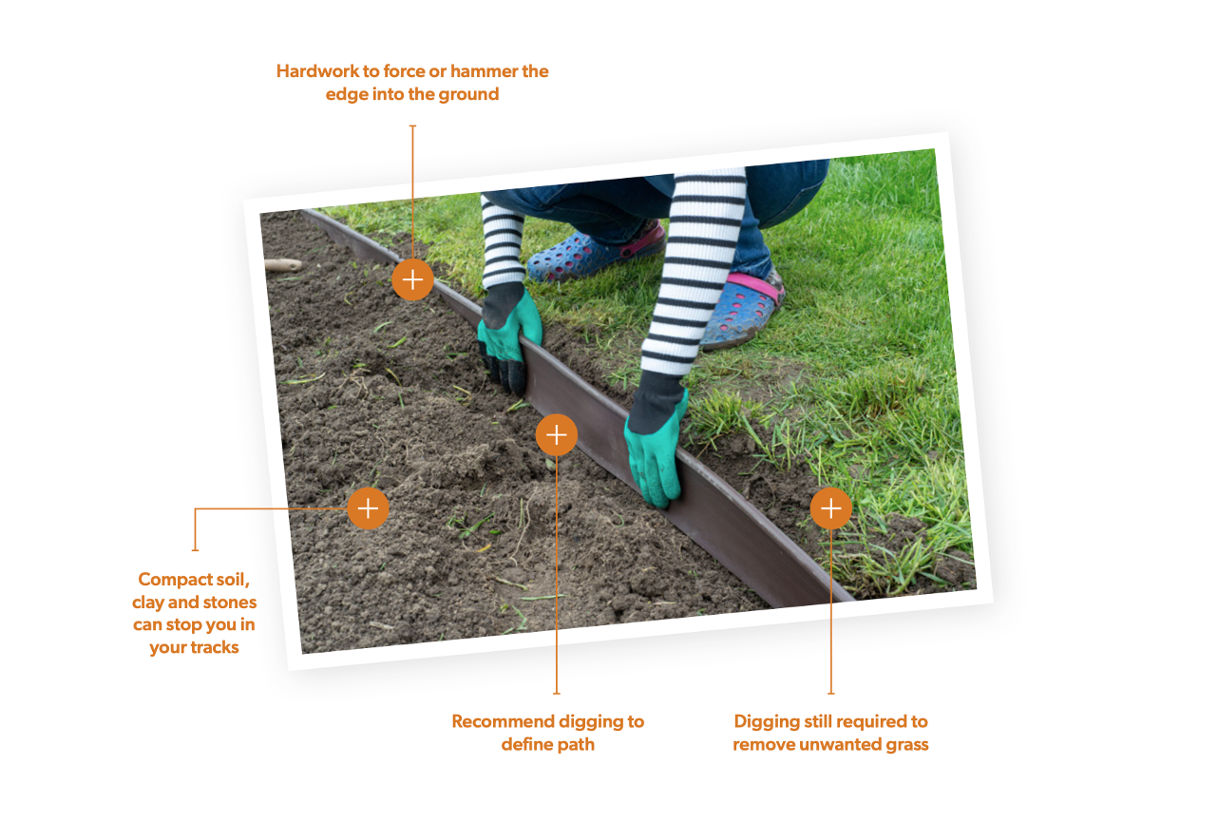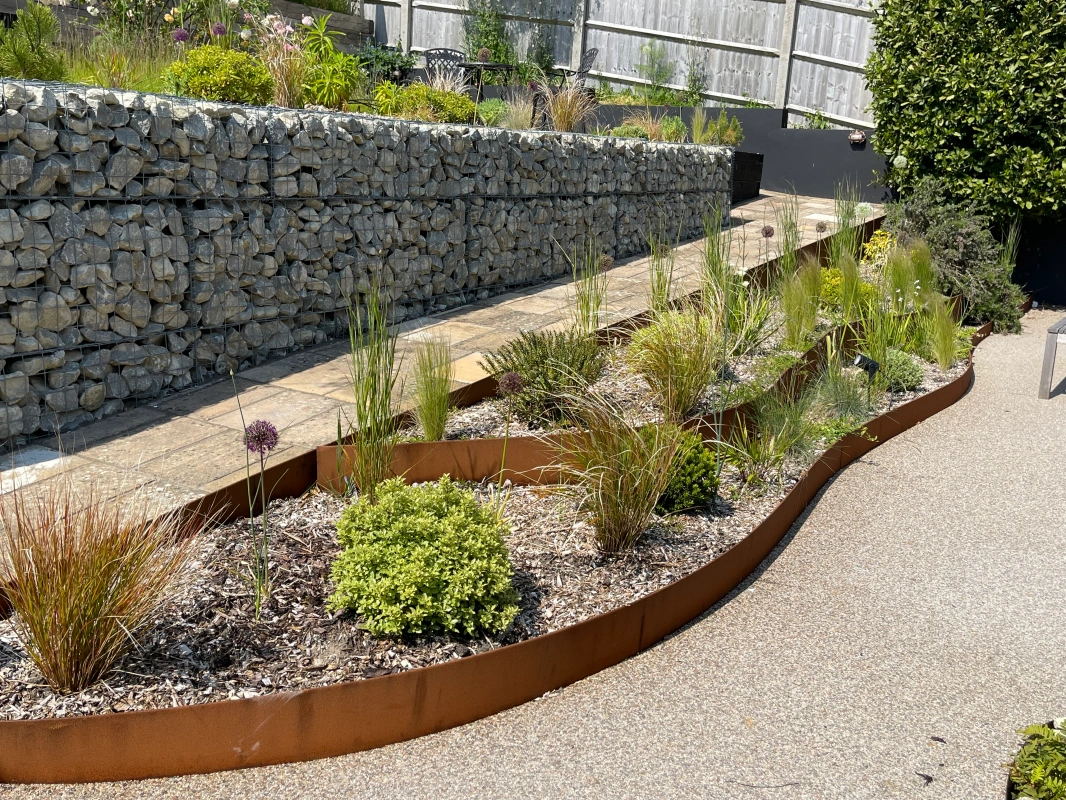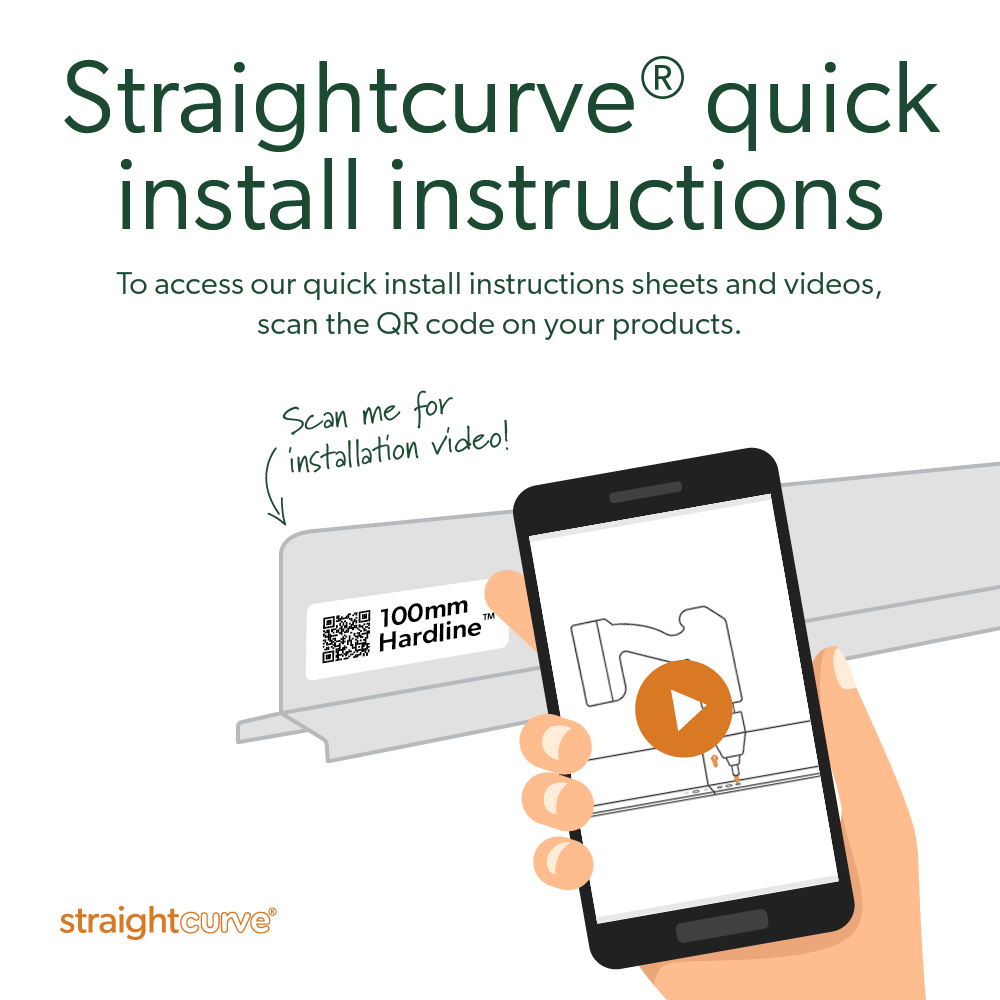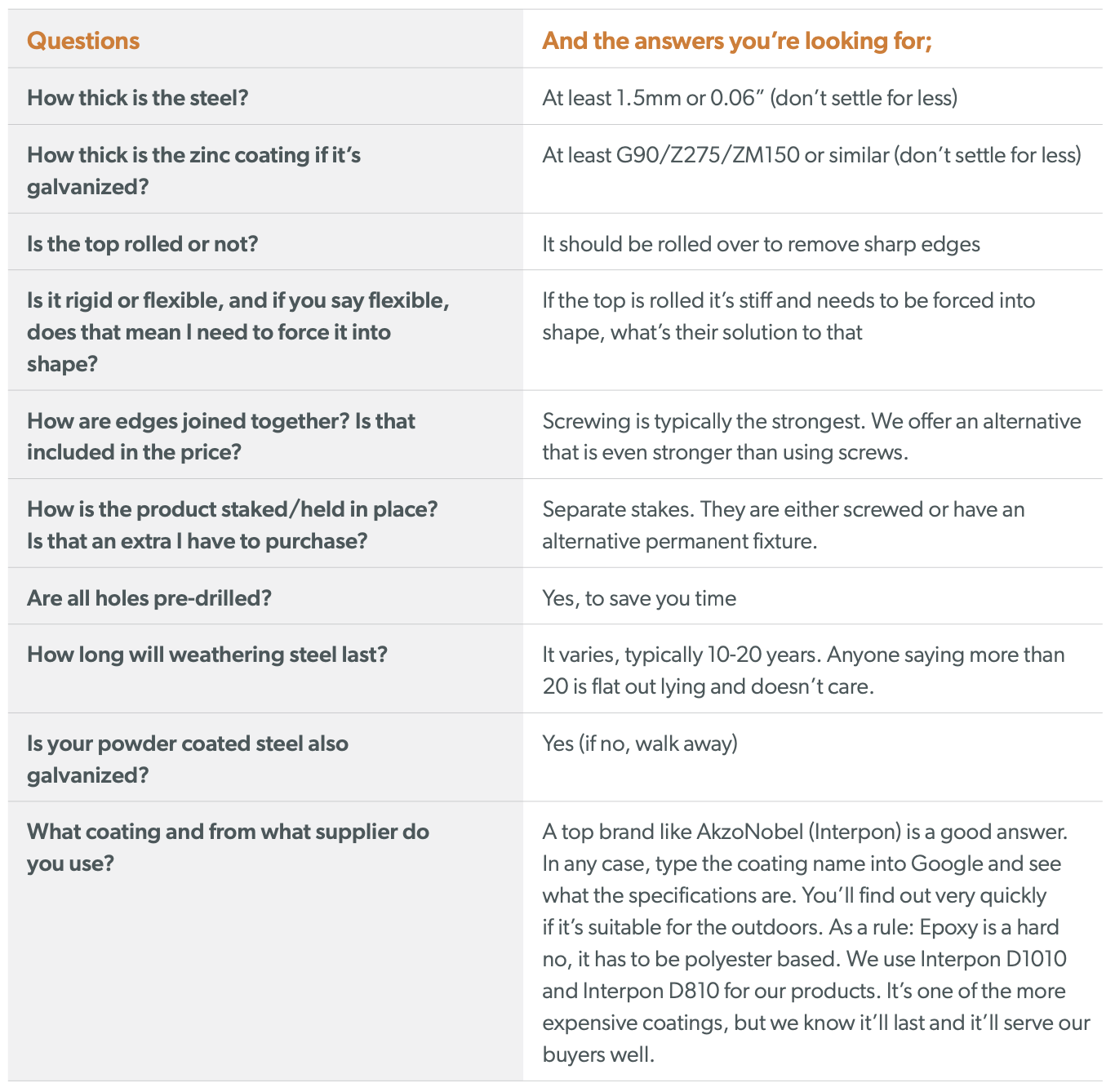
Metal Garden Edging Myths & Misconceptions – A Smarter Buyer’s Guide
Introduction
When it comes to choosing metal garden edging, you might assume that if you’ve seen one brand, you’ve seen them all. But that’s not the case.
What’s more, knowing how to spot the difference between the good, the bad, and the ugly can save you a significant amount of time, money, effort, and frustrating rework.
So spend 10 minutes reading this article to save yourself the installation headaches and buyer’s remorse that could come later, if you mistakenly buy the wrong kind of metal garden edging.
Why Read This Article?
Read this article if you’d like to…
- See beyond common metal garden edging marketing gimmicks
- Understand why bending & flexing are not the same thing and why it’s important to know the difference when choosing metal garden edging
- Learn what to look for (and what to avoid) if you want metal garden edging that’s truly easy to install
- Discover the 10+ questions to ask your landscape materials supplier before buying any metal garden edging
“No Dig” Metal Garden Edging Doesn’t Mean “No Effort”
“No-Dig-Edging” may sound like a good idea at first. The name implies that you won’t have to do any hard work because “No digging is required!”
However, in reality, you do have to hammer this type of metal garden edging into the ground using a heavy hammer and a block of wood to prevent damage to the edging. This can be quite strenuous and even painful. Additionally, the process is even more challenging if you encounter tree roots, pebbles, or small rocks in the ground.
This kind of edging is also only suitable for use in soft and freshly turned soil. If your soil is slightly compacted, contains clay, or is part of an established lawn, the edging won’t be effective. Kind of ironic, when you consider that the purpose of garden edging is often to prevent lawns from encroaching into other areas. If that’s why you’re choosing metal garden edging, you would need to hammer and dig to remove the existing grass and define your edge’s boundary.
In summary, despite its name, “no-dig” metal garden edging isn’t as effortless as it may seem. In some cases, it might even require more effort to achieve your desired results.

Bendable vs Flexible Metal Garden Edging
In the context of metal garden edging, the terms “bending” and “flexing” are often used interchangeably. However, many so-called flexible edging products are not truly flexible and require substantial force to shape. It’s important to differentiate between products that are genuinely flexible and those that are merely bendable.
There are numerous types of garden edging, and most manufacturers will claim that their product is flexible without explaining how. In reality, most metal garden edging is not very flexible. While it may be bendable with enough force, that doesn’t necessarily make it truly flexible. Additionally, shaping a metal garden edge requires considerable practice and skill. To address this issue, we established Straightcurve to develop a genuinely flexible edging product.
Tip: Before purchasing edging that is bendable but not truly flexible, carefully examine how the edge is supposed to be shaped. Does it require skilled shaping, or is it genuinely flexible? If the top is folded over (which it should be to avoid sharp edges), the product will be difficult to flex!

Metal Garden Edging and Ease of Installation Promises
Most metal garden edging brands claim that their product is easy to install. However, the term “easy to install” is relative. The important question to consider is, easy compared to what? Is it easy compared to installing a kitchen, or is it easy compared to other edging brands? Before making a purchase, assess how easy or difficult an edging product is to install. Look out for the following factors:
1. Remember, “No dig edging” is often not as user-friendly as it sounds
Until you’ve hammered metal garden edges into the ground, it’s hard to appreciate that digging a trench is far easier and much less effort than hammering. You need to hammer hard! Very hard! Repeatedly and along the entire edge. Getting the shape right is also very difficult; there’s no adjustment or fine-tuning after you’ve hammered it into the ground.
2. Be cautious if the metal garden edging product has pre-attached pegs or stakes
The supplier benefits from this type of edging, but it probably won’t work well for you. This kind of edging is designed to cut production costs and simplify distribution, not to meet your needs. It’s also hard to install and doesn’t allow for changes in shape during installation. Getting a consistent curve or line is difficult because the individual pieces are fixed in position right away. Additionally, this type of metal garden edging can cause issues with tree roots, rocks, pebbles, and underground pipes.
3. If your metal garden edging lacks a rolled top, that could be an issue
Most steel edges do not have a rolled or folded top. A rolled top refers to a sheet metal edge where the top is folded over to create a smooth and rounded finish. When this is missing, the edge can be sharp and pose a safety hazard. Many suppliers choose not to roll their edges for two reasons: it’s cheaper not to and it’s difficult to curve a rolled edge. It is possible to have the top rolled over and keep it flexible at the same time (as you’ll see with the Straightcurve Flex Garden Edging Range), but most brands do not offer that option.
4. The way metal garden edges are joined is a crucial component of installation ease
When it comes to metal garden edging, the best products can be joined together securely before they’re installed in the ground. If your chosen edges cannot be joined beforehand, you may find it very difficult to create a consistent curve or line in your garden. Avoid using pre-attached pegs for edging as they can make it challenging to achieve the desired shape. Instead, opt for edging that can be joined with screws (or a proprietary connection system) for a sturdy connection. Keep in mind that most companies do not pre-drill their products, so you’ll need to do the drilling yourself, which can also be very quite challenging.
5. Determine if you require additional accessories
Remember to keep an eye out for additional costs when comparing prices from different suppliers. Some suppliers may only advertise the price per meter (or per foot) of a product but fail to mention that you’ll need to purchase connector plates or stakes separately. Where a supplier does offer these accessories separately, they can increase the overall price per meter by 20-30%. So when evaluating different brands, it’s important to ask the supplier what’s included to make sure you’re comparing similar offers.
In summary, you’ll find almost every brand will claim their product is easy to install, but only a few will actually optimise for it. Look for clues in how the products are designed and how the customer support materials are put together.

Remember to ask these 10 questions before you purchase metal garden edging
If you purchase the wrong type of metal garden edging, you could end up wasting hundreds or even thousands of dollars. Additionally, you may find yourself needing to replace it in just a few years.
That won’t be the case if you look for high-quality metal garden edging that’s designed for easy installation. Take a close look at our range and you’ll find that Straightcurve edging is setting the standard from an environmental, quality control, and project result perspective.
We’ve yet to find metal edging (or any other kind) that provides the same level of customer satisfaction and ease of installation. There are, however, suppliers in the market who are eager to sell their products and may exaggerate their claims to make a sale.
So to safeguard yourself from making a costly mistake, make sure you ask your landscape supplier the following questions and compare their responses with the answers provided below.
Conclusion + Helpful Resources
I hope this short article has given you an insight into what look for and what to avoid when it comes to metal garden edging.
If you want to know more about our products, check out these links:
- Download Our Product Catalogue – Download the pdf to view our entire range.
- Check Out Our Image Gallery – For examples of gardens made with Straightcurve garden edging.
- View Installation Videos – Here you’ll discover how easy it is to use our products in your garden.
- Find Your Nearest Dealers – Find stockist locations and details on our “Where To Buy” map.
- Request Pricelist & Brochure – Submit for a brochure, pricelist, and stockist’s details by email.
- Downloadable This Case Study PDF – Save this in a folder of inspirational ideas.
- Garden Edging: DIY Gardener’s Essential Guide – Your deep dive into all things Garden Edging.






